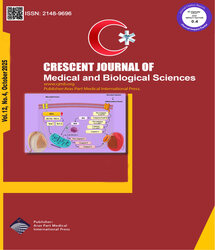
| Original Article | |
| An In Vitro Study of the Effect of Cinnamaldehyde on the Growth of Candida albicans Compared to Nystatin and Fluconazole | |
| Diyardokht Rahemi1,2, Neda Babaee1, Sohrab Kazemi2, Seyyed Ali Asghar Sefidgar3, Ali Akbar Moghadamnia2 | |
| 1Department of Oral Medicine, Babol University of Medical Sciences, Babol, Iran 2Department of Pharmacology and Cellular and Molecular Biology Research Center, Babol University of Medical Sciences, Babol, Iran. 3Department of Mycology, Babol University of Medical Sciences, Babol, Iran |
|
|
CJMB 2015; 2: 076-080 Viewed : 4200 times Downloaded : 4126 times. Keywords : Candida albicans, Cinnamaldehyde, Cinnamon, DMSO |
|
| Full Text(PDF) | Related Articles | |
| Abstract | |
Objective: Cinnamaldehyde is the main active component of cinnamon essential oil with antibacterial and antifungal effects. This in vitro study was done to investigate the effect of cinnamaldehyde on the growth of standard strain of Candida albicans (C. albicans) in comparison to nystatin suspension and fluconazole. Materials and Methods: The tests were designed for the three groups of this study namely cinnamaldehyde, fluconazole and nystatin. Standard strain of C. albicans (PTCC 5027) was used. Three methods namely disc diffusion, well diffusion and microdilution were used. Based on elevation of cinnamaldehyde concentrations, its antifungal effect was increased. Results: The minimum inhibitory concentration (MIC) of antifungal effect of cinnamaldehyde was 0.312 μl/ml. This effect is similar to the effect of 100000 IU/ml nystatin in concentration of 20 μl/ml and 1% fluconazole in concentration of 40 μl/ml. The mean (±SD) of inhibition zone diameter in concentration of 80 μl/ml for disc and well diffusion were 60.4 (±2.2) and 70 (±3.5) mm, respectively. Conclusion: These inhibition zones were larger than the zones for fluconazole and nystatin groups. According to the results, cinnamaldehyde has dose-dependent anti-C. albicans effect. In some concentrations, the cinnamaldehyde effect is similar to fluconazole and nystatin. |
Cite By, Google Scholar
Google Scholar
PubMed
Online Submission System
 CJMB ENDNOTE ® Style
CJMB ENDNOTE ® Style
 Tutorials
Tutorials
 Publication Charge
Medical and Biological Research Center
About Journal
Publication Charge
Medical and Biological Research Center
About Journal
Aras Part Medical International Press Editor-in-Chief
Arash Khaki
Deputy Editor
Zafer Akan

















